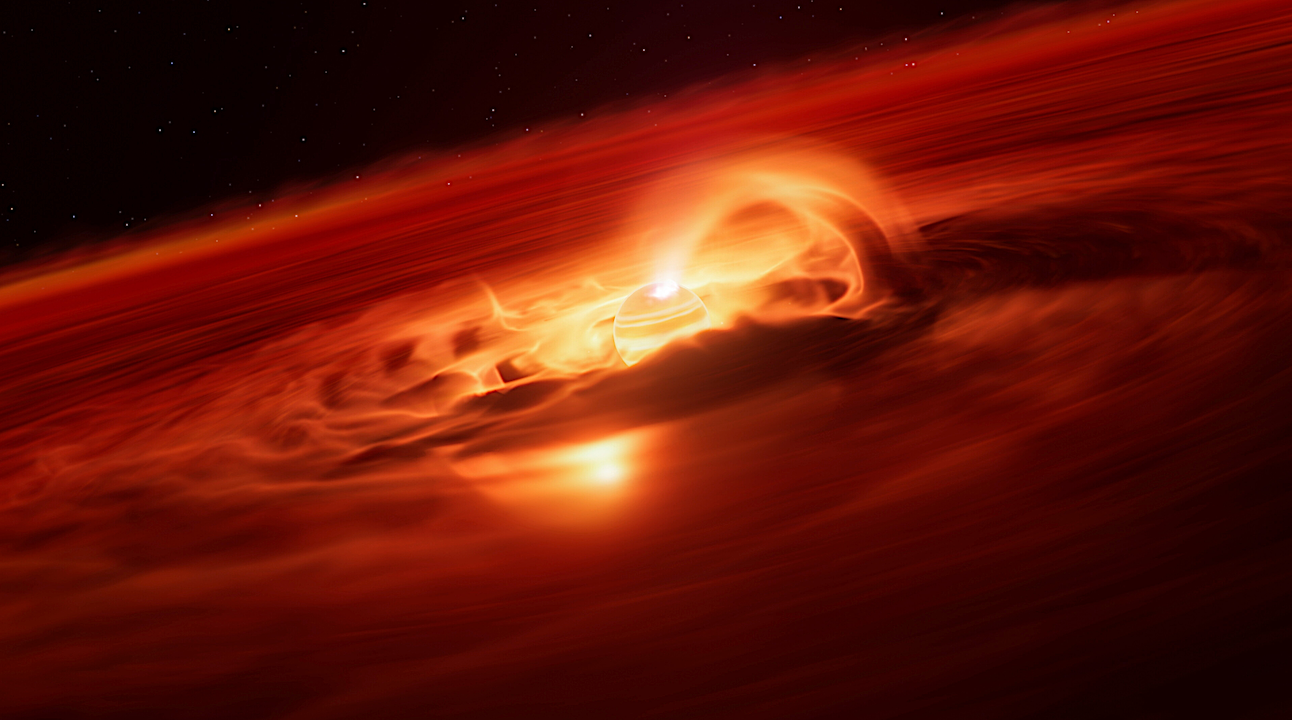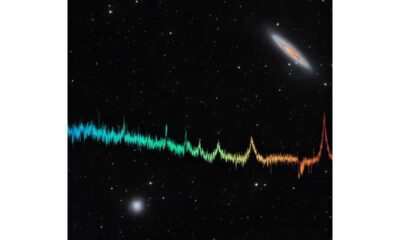Science
Astronomers Discover Rogue Planet Growing at Unprecedented Rate

Astronomers have made a groundbreaking discovery regarding a rogue planet, officially designated as Cha 1107-7626. This celestial body is exhibiting an extraordinary growth rate of approximately six billion tonnes per second, a rate never before recorded for any planetary mass object. The observations were conducted using the European Southern Observatory’s Very Large Telescope (ESO’s VLT) in Chile’s Atacama Desert. The findings provide critical insights into the formation and growth processes of such free-floating planets.
The rogue planet, located about 620 light-years from Earth in the constellation Chamaeleon, possesses a mass estimated to be five to ten times that of Jupiter. It is currently in a formative phase, drawing material from a surrounding disc of gas and dust through a process known as accretion. The team, led by astronomer Víctor Almendros-Abad of the National Institute for Astrophysics in Italy, has observed that the accretion rate is not constant. Remarkably, from early 2025, the planet’s growth accelerated significantly, marking the fastest accretion episode recorded for any planetary mass object.
“This is the strongest accretion episode ever recorded for a planetary-mass object,” Almendros-Abad stated. The research findings, which have been published in The Astrophysical Journal Letters, indicate a pattern where the planet’s accretion rate increased dramatically over a short period.
Revolutionizing Our Understanding of Planetary Formation
The discovery has raised intriguing questions about the origins of rogue planets. Co-author Aleks Scholz, an astronomer at the University of St Andrews in the United Kingdom, remarked, “The origin of rogue planets remains an open question: are they the lowest-mass objects formed like stars, or giant planets ejected from their birth systems?” The findings suggest that some rogue planets may share a formation pathway similar to stars, as similar bursts of accretion have been observed in young stellar objects.
As co-author Belinda Damian explains, “This discovery blurs the line between stars and planets and gives us a sneak peek into the earliest formation periods of rogue planets.” The research team utilized data from the James Webb Space Telescope and archival data from the SINFONI spectrograph on ESO’s VLT to analyze the light emitted from the planet before and during the accretion burst.
The results revealed that magnetic activity likely played a significant role in driving the rapid mass infall, a phenomenon typically associated with stars. This suggests that even low-mass celestial objects can possess strong magnetic fields capable of influencing their growth.
Future Explorations and Implications
The research also uncovered changes in the chemistry of the disc surrounding Cha 1107-7626 during the accretion episode, with water vapor detected for the first time. Such observations had previously only been noted in stars, marking a significant milestone in our comprehension of planetary atmospheres.
Detecting free-floating planets like Cha 1107-7626 poses challenges due to their faintness. However, the upcoming Extremely Large Telescope (ELT) is expected to enhance astronomers’ ability to discover and study these elusive objects. According to co-author and ESO astronomer Amelia Bayo, “The idea that a planetary object can behave like a star is awe-inspiring and invites us to wonder what worlds beyond our own could be like during their nascent stages.”
This research not only sheds light on the dynamics of rogue planets but also opens new avenues for understanding the broader processes of planetary formation and evolution. The implications of these findings are profound, potentially reshaping our understanding of how planets, both familiar and foreign, come into existence.
-

 Technology5 months ago
Technology5 months agoDiscover the Top 10 Calorie Counting Apps of 2025
-

 Health3 months ago
Health3 months agoBella Hadid Shares Health Update After Treatment for Lyme Disease
-

 Technology1 week ago
Technology1 week agoOpenAI to Implement Age Verification for ChatGPT by December 2025
-

 Health3 months ago
Health3 months agoErin Bates Shares Recovery Update Following Sepsis Complications
-

 Technology4 months ago
Technology4 months agoDiscover How to Reverse Image Search Using ChatGPT Effortlessly
-

 Technology3 months ago
Technology3 months agoElectric Moto Influencer Surronster Arrested in Tijuana
-

 Technology1 month ago
Technology1 month agoDiscover 2025’s Top GPUs for Exceptional 4K Gaming Performance
-

 Technology5 months ago
Technology5 months agoMeta Initiates $60B AI Data Center Expansion, Starting in Ohio
-

 Health3 months ago
Health3 months agoAnalysts Project Stronger Growth for Apple’s iPhone 17 Lineup
-

 Technology5 months ago
Technology5 months agoRecovering a Suspended TikTok Account: A Step-by-Step Guide
-

 Health5 months ago
Health5 months agoTested: Rab Firewall Mountain Jacket Survives Harsh Conditions
-

 Lifestyle5 months ago
Lifestyle5 months agoBelton Family Reunites After Daughter Survives Hill Country Floods














